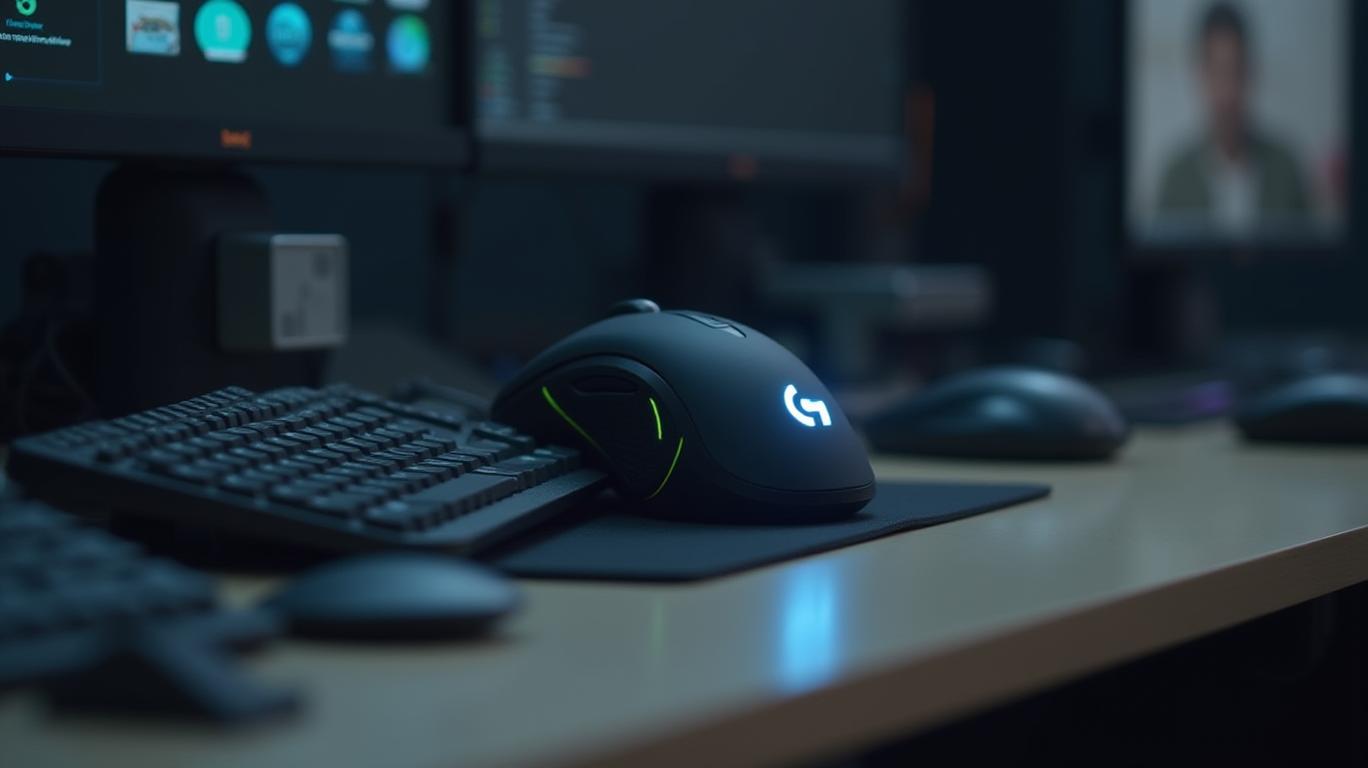Logitech's Flat Stock Reflects Near-Term Headwinds Amid Strategic Resilience
Logitech International (LOGI) found itself in a familiar position after its March-quarter earnings: navigating a landscape where short-term challenges overshadow long-term strategic gains. While the company reported a 7% constant-currency sales growth in fiscal 2025, its Q4 results fell short of estimates, and cautious guidance for Q1 2026 left investors cautiously optimistic. Despite the "miss," the stock remained flat post-earnings—a reflection of broader macroeconomic and geopolitical risks rather than a loss of investor faith.

The Sales "Miss" and Strategic Context
Logitech’s Q4 fiscal 2025 sales of $1.01 billion were slightly below the $1.03 billion consensus, driven by a mix of external headwinds and strategic investments. The company’s gaming and enterprise segments—key growth engines—showed resilience (up 10% and 7%, respectively), but webcam sales slumped as pandemic-era demand faded. Meanwhile, a payment processor outage and $4 million in bad debt expenses further dampened quarterly profitability, with non-GAAP EPS declining 6% to $0.93.
The bigger concern lies in the outlook: For Q1 2026, Logitech expects sales growth of 0–5% in constant currency, a sharp deceleration from fiscal 2025’s 7% expansion.
Tariffs and Margin Pressures: A Thorny Issue
The primary culprit behind Logitech’s tepid outlook is the U.S. tariff regime. The company now faces tariffs of up to 145% on Chinese-manufactured goods shipped to the U.S., a burden it’s mitigating by diversifying production. By year-end 2025, just 10% of U.S. sales will originate from China, down from 40%. However, even this shift can’t fully shield Logitech from tariffs: 60% of its global sales are sourced from Vietnam, Taiwan, and other regions also subject to U.S. levies.
The impact is already visible: Tariffs alone will reduce Q1 2026 gross margins by 200 basis points. CFO Matteo Anversa noted that without price increases and inventory pre-positioning, the hit would have been 500 basis points. “We’re not passing all costs to consumers,” he said, highlighting the delicate balance between pricing and market share.
Operational Strengths and Financial Fortitude
Amid these headwinds, Logitech’s financial health remains a stabilizing force. Fiscal 2025 operating cash flow hit $840 million, and the company returned $797 million to shareholders via buybacks and dividends. A pristine balance sheet—$1.5 billion in cash and minimal debt—provides flexibility to navigate disruptions.
Strategically, Logitech is doubling down on high-margin segments:
- B2B Growth: The Logitech for Business division, which now serves 75% of the Fortune 500, grew mid-single digits in fiscal 2025.
- Innovation: 39 new products launched in 2025, including the Alto Keys keyboard and Pro X Superlight gaming mouse, underscore the brand’s premium positioning.
Investor Considerations: Near-Term Pain vs. Long-Term Gain
Analysts at institutions like Goldman Sachs and JPMorgan remain mixed. While some highlight Logitech’s undervalued status—its stock trades at 17x forward earnings versus a 22x sector average—others warn of lingering risks.
Key takeaways for investors:
1. Tariff Mitigation Timeline: The shift from Chinese manufacturing will take time. Full tariff-proofing isn’t expected until late 2025.
2. Margin Recovery: Gross margins are projected to rebound to 44% by fiscal 2026, assuming successful cost controls and price adjustments.
3. Valuation: At $78/share, Logitech’s stock is 34% below its 52-week high—a discount that could attract value investors if macro risks subside.
Conclusion: A Company in Transition, but Still Worth Watching
Logitech’s flat stock price post-earnings underscores a market caught between near-term pessimism and long-term optimism. While tariffs and slowing consumer demand pose clear risks, the company’s diversified manufacturing, robust cash flow, and premium product pipeline position it to weather the storm.
The data paints a balanced picture:
- Strengths: 7% sales growth in fiscal 2025, $840 million cash flow, and a 2.14 current ratio (signifying strong liquidity).
- Weaknesses: 200 basis point tariff-driven margin pressure and a 15% potential decline in Q1 operating income at the lower end of guidance.
For investors, Logitech is a tale of two timelines. In the short term, cautious positioning and macroeconomic uncertainty justify the muted stock reaction. Over the next 12–18 months, however, the company’s strategic moves—pricing discipline, B2B expansion, and supply chain diversification—could turn the tide. Until then, LOGI remains a hold for those willing to bet on resilience in choppy waters.










